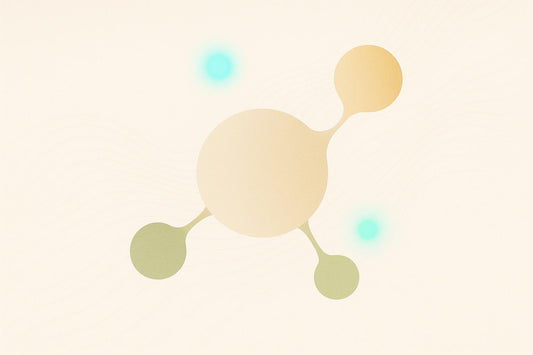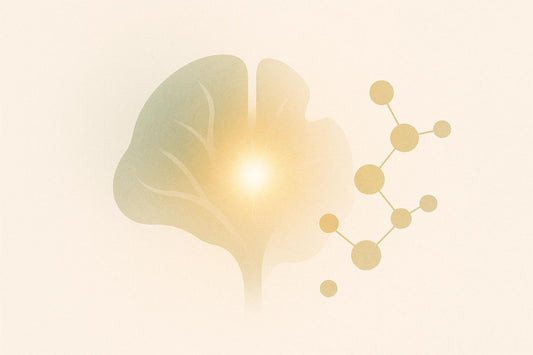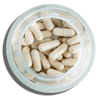Suchergebnisse
-

Oxidative Stress vs. DNA Repair Mechanisms
Your cells are locked in a constant battle between damage and repair. On one side, oxidative stress - caused by reactive oxygen species (ROS) - damages DNA, leading to mutations,...
-

Morning vs Evening: Best Time for NMN Supplements
When should you take NMN supplements - morning or evening? The answer depends on your goals, age, and lifestyle. Here's a quick breakdown: Morning NMN: Best for boosting daytime energy,...
-

NMN and ROS: Cellular Protection
NMN (nicotinamide mononucleotide) is a molecule that helps increase NAD⁺ levels in the body, which are essential for energy production, DNA repair, and managing oxidative stress caused by reactive oxygen...
-
How Is CRISPR Technology Revolutionizing Medicine and Agriculture?
CRISPR TechnologyCRISPR technology is revolutionizing the way we approach genetics and biotechnology. This groundbreaking tool allows us to make precise edits to DNA, opening up a world of possibilities in...
-
Who Is Dave Pascoe and How Is He Revolutionizing Aviation?
Unveiling the Enigma: Dave PascoeWhen we talk about modern aviation experts, Dave Pascoe's name often comes up as a beacon of knowledge and innovation. With a robust background in both...
-
How Does Neutrophil Activity Protect Your Body from Infections?
Neutrophil ActivityWhen it comes to our immune system, neutrophils play a crucial role as the body's first line of defense. These remarkable white blood cells rush to the site of...
-

How Late-Night Eating Affects Metabolism
Late-night eating can disrupt your metabolism, leading to weight gain, hormonal imbalances, and increased risks of chronic diseases like diabetes and heart disease. Here's what you need to know: Eating...
-

Ultimate Guide to Telomerase Biomarkers
Telomerase biomarkers are essential for understanding aging, disease risks, and cancer detection. They measure telomerase activity, an enzyme that preserves telomeres - protective caps on chromosomes that shorten with age....
-

How p16INK4a Tracks Cellular Aging Across Species
p16INK4a is a key marker of cellular aging. It reflects how cells age, stop dividing, and accumulate damage, which contributes to age-related conditions like cancer and Alzheimer's. This protein rises...
-

How Selenium Supports Glutathione Peroxidase in Neurons
Selenium is essential for brain protection. It activates glutathione peroxidase (GPx), an enzyme that defends neurons from oxidative damage caused by reactive oxygen species (ROS). Glutathione peroxidase neutralizes harmful compounds....
-

Ultimate Guide to Biomarkers of Cellular Senescence
Did you know that up to 10% of tissues in older adults may show signs of cellular senescence? These aging cells play a central role in the aging process and...
-

Challenges in Standardizing Herbal Extracts
Standardizing herbal extracts is tough but crucial. Unlike synthetic drugs, herbal products face inconsistent quality due to plant variability, complex compositions, and fragmented regulations. Here's why it matters and what's...
-

MnSOD: Manganese and Brain Protection
MnSOD (manganese superoxide dismutase) is a key shield for your mind, fighting off harm that stress can cause. It sets to work in mitochondria, where the cell gets its power,...
-
How Can a Continuous Glucose Monitor Revolutionize Your Diabetes Management?
Continuous Glucose MonitorManaging diabetes can feel like a full-time job, but continuous glucose monitors (CGMs) are revolutionizing how we track blood sugar levels. Unlike traditional finger-prick tests, CGMs provide real-time...
-

NMN Dosage and Blood Glucose: What Studies Show
NMN (nicotinamide mononucleotide) is a molecule that boosts NAD⁺ levels, which decline with age and are essential for energy metabolism and DNA repair. While NMN supplementation shows promise for improving...
-

5 Side Effects of Probiotics and How to Manage Them
Probiotics can support gut health, immunity, and more, but they might cause some side effects, especially when you first start taking them. Here's a quick overview of the five most...
-
How Can Effective Infection Control Measures Protect Public Health?
Infection ControlIn today's interconnected world, infection control has never been more crucial. With the rise of global travel and densely populated urban areas, infectious diseases can spread rapidly, posing significant...
-

Licorice Root: Antiviral Properties for Respiratory Health
Licorice root, derived from the Glycyrrhiza glabra plant, has been used for thousands of years to support respiratory health. Modern research confirms its antiviral, anti-inflammatory, and immune-boosting properties, making it...
-

CFR 111 and Supplement Packaging: What to Know
CFR 111 is a U.S. regulation that ensures the safety, quality, and consistency of dietary supplements. It covers manufacturing, packaging, labeling, and storage processes to protect supplements from contamination and...
-

Stem Cell Skin Rejuvenation: 5-Year Results Explained
Stem cell skin treatments are changing how we approach anti-aging. These therapies use the body’s own cells to improve skin texture, elasticity, and appearance at a deeper level. Here’s what...
-

How NMN Regulates Inflammatory Pathways
NMN (Nicotinamide Mononucleotide) is a molecule that helps boost NAD+ levels, which naturally decline with age. This decline is linked to chronic inflammation, aging, and diseases like Alzheimer’s, heart disease,...
-

ATP and Mitochondria: Energy for Repair
Your body runs on ATP, the energy molecule that powers nearly every cellular process. It fuels DNA repair, protein maintenance, and cell membrane stability. Mitochondria, the "power plants" of your...
-

Machine Learning for DNA Methylation Age Prediction
DNA methylation patterns are transforming how we measure aging, and machine learning is at the center of this shift. Here's what you need to know: DNA methylation involves chemical changes...
-

Strength Training vs. Cardio for Heart Health
Want what's good for your heart? Mix weight lifting and heart-moving workouts. Weight Lifting: Cuts heart disease risk by 17%, betters body shape, drops bad fat in the blood, and...




















